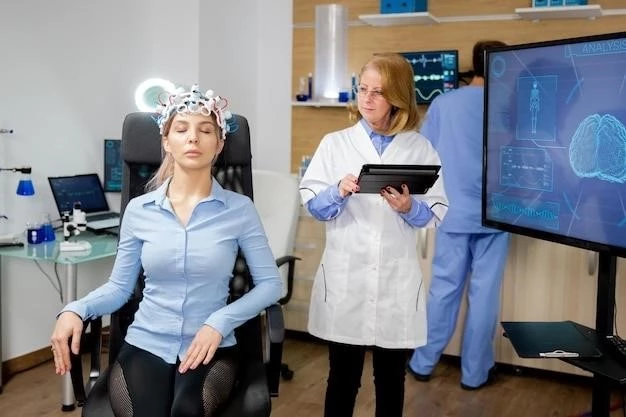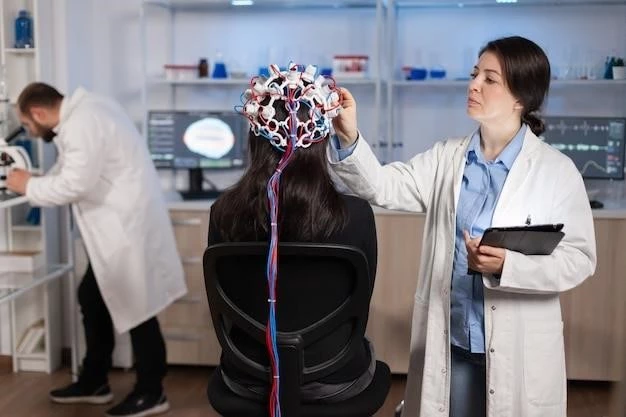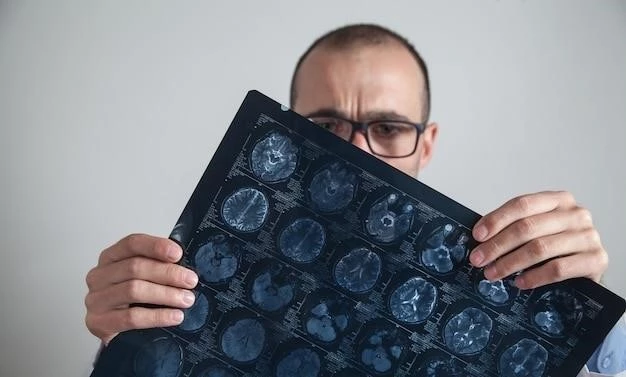Article Plan⁚ Disease ⎼ Pierre Marie Cerebellar Ataxia
Introduction
Pierre Marie cerebellar ataxia is a neurological condition characterized by symptoms like incoordination, gait disturbances, and difficulty with speech. Understanding the genetic and molecular basis of this disorder has been significantly enhanced in recent years. French neurologist Pierre Marie made important contributions to the field, including his description of hereditary cerebellar ataxia. The disease involves degenerative changes in the cerebellum, leading to progressive symptoms that typically manifest after the age of 20.
Overview of Cerebellar Ataxia
Cerebellar ataxia encompasses a range of disorders affecting balance, coordination, and speech due to cerebellum dysfunction. Initially described by French neurologist Pierre Marie, hereditary cerebellar ataxia is a prime example. It can be acute or chronic and is linked to various conditions, including multiple sclerosis.
Lesions in the cerebellum can lead to ataxic syndromes affecting motor skills and cognitive functions. The scope of cerebellar disorders extends beyond motor impairment, encompassing cognitive and emotional difficulties.
Understanding the various forms of ataxia, such as hereditary cerebellar ataxia, is critical for accurate diagnosis and management. Recent advancements in genetics and neurology have provided insights into the pathophysiology of cerebellar ataxia, paving the way for improved therapeutic strategies.
Definition and Symptoms
Pierre Marie cerebellar ataxia, also known as Marie’s ataxia, is a hereditary disorder characterized by progressive incoordination, gait disturbances, and dysarthria. This condition primarily affects the cerebellum, leading to impairments in balance and coordination.
The hallmark symptoms of Pierre Marie cerebellar ataxia include muscle coordination difficulties, speech problems, and abnormal gait patterns. Patients may experience worsening symptoms over time, impacting daily activities and quality of life.
Individuals with this condition often present with a wide-based gait, hand tremors, and slurred speech. As the disease progresses, patients may develop additional neurological symptoms such as nystagmus (involuntary eye movements) and hyperreflexia.
Early diagnosis and management of Pierre Marie cerebellar ataxia are crucial in addressing the progressive nature of the disease and improving outcomes for patients. Collaborating with healthcare providers experienced in neurogenetics can aid in accurate diagnosis and personalized treatment plans.
History of Pierre Marie
Pierre Marie, a French neurologist born in 1853, made significant contributions to the understanding of various neurological diseases, including hereditary cerebellar ataxia. He described Marie’s ataxia, known for its impact on young adults with a failure of muscular coordination. Marie also delved into Internal Medicine, studying conditions like acromegaly and ankylosing spondylitis.
Throughout his career, Marie was known for his astute clinical observations, particularly in the realms of familial progressive muscular atrophy and hereditary cerebellar ataxia. His pioneering work shed light on the pathophysiology and clinical presentations of these conditions, shaping the field of neurology.
By introducing the term ″hereditary cerebellar ataxia,″ Marie’s research highlighted the genetic underpinnings of certain neurological disorders, paving the way for further exploration into the mechanisms behind these conditions.
Contribution to Neurology
Pierre Marie, the eminent French neurologist, made lasting contributions to the field through his meticulous observations and insights. Particularly notable were his descriptions of various neurological conditions, such as hereditary cerebellar ataxia and Charcot-Marie-Tooth disease. Marie’s work on acromegaly and ankylosing spondylitis also showcased his broad expertise.
Marie’s detailed studies and clinical acumen played a pivotal role in elucidating the pathophysiology of neurological disorders, enhancing our understanding of conditions involving the cerebellum and spinal cord. His dedication to advancing neurology, neurogenetics, and Internal Medicine continues to inspire generations of healthcare professionals.

By introducing key concepts like hereditary cerebellar ataxia and contributing significantly to the characterization of various diseases, Pierre Marie left an indelible mark on neurology. His legacy underscores the importance of meticulous clinical observation and rigorous research in advancing our knowledge of neurological disorders.
Description of Pierre Marie Cerebellar Ataxia
Pierre Marie cerebellar ataxia, also known as Marie’s ataxia, is a hereditary condition initially presented by French neurologist Pierre Marie in 1893. This disorder primarily affects young adults, leading to a failure of muscular coordination due to cerebellar degeneration.
Individuals with Pierre Marie cerebellar ataxia experience a range of symptoms, including incoordination in movements, tremors in the hands, and difficulties with speech articulation. The condition progressively worsens over time, impacting various aspects of daily life and mobility.
Pierre Marie’s meticulous observations and detailed descriptions of this hereditary cerebellar ataxia paved the way for further research into the genetic and molecular mechanisms underlying this condition. Understanding the clinical features and progression of Pierre Marie cerebellar ataxia is crucial for accurate diagnosis and effective management strategies.
Genetic Basis of the Disease
The genetic basis of Pierre Marie cerebellar ataxia lies in its hereditary nature, attributed to specific genetic mutations impacting the function of the cerebellum. Typically, this condition is autosomal dominant and can stem from various genetic abnormalities affecting chromosome regions associated with cerebellar function.
Scientists are rapidly advancing their understanding of the genetic and molecular biology mechanisms behind cerebellar ataxias, including Pierre Marie cerebellar ataxia, paving the way for targeted genetic testing and potential gene therapies in the future.
Hereditary cerebellar ataxias, such as Pierre Marie cerebellar ataxia, highlight the importance of genetic counseling and testing for affected individuals and their families to better comprehend the genetic underpinnings of the disease and facilitate personalized treatment approaches.
Diagnosis and Differential Diagnosis
Diagnosing Pierre Marie cerebellar ataxia involves thorough clinical evaluation, including neurological examinations to assess coordination, gait, and speech patterns. Neuroimaging techniques such as MRI may reveal cerebellar abnormalities associated with the condition.
The differential diagnosis for Pierre Marie cerebellar ataxia includes other forms of hereditary ataxias, acquired cerebellar disorders, and conditions mimicking cerebellar dysfunction. Distinguishing features such as the age of onset, progression of symptoms, and family history play a crucial role in accurate diagnosis.
Collaboration with specialists in neurogenetics, neurology, and diagnostic imaging is essential for confirming the diagnosis of Pierre Marie cerebellar ataxia and ruling out other potential causes of ataxia. Genetic testing may also be recommended to identify specific mutations associated with the disease.
Treatment Options
Managing Pierre Marie cerebellar ataxia involves a multidisciplinary approach aimed at addressing symptoms and improving quality of life. While there is no cure for this hereditary condition, treatment focuses on symptom management, rehabilitation, and supportive care.
Physical therapy and assistive devices play a crucial role in helping individuals with Pierre Marie cerebellar ataxia maintain mobility and independence. Speech therapy may aid in addressing communication difficulties, while occupational therapy can enhance daily living skills.
Pharmacological interventions may be prescribed to manage specific symptoms such as tremors or spasticity associated with the condition. Close monitoring by a neurologist specializing in movement disorders is essential to adjust medications and ensure optimal symptom control.
Furthermore, individuals with Pierre Marie cerebellar ataxia may benefit from genetic counseling to understand the hereditary nature of the condition and explore options for family planning. Psychological support and community resources can provide emotional assistance and improve coping strategies for patients and their families.
Prognosis and Management
Individuals with Pierre Marie cerebellar ataxia often face a progressive course of the disease, leading to challenges in mobility, communication, and daily functioning as the condition advances. While there is currently no cure for this hereditary disorder, management strategies focus on symptom alleviation, improving quality of life, and providing support to patients and their families.
Effective management of Pierre Marie cerebellar ataxia involves a multidisciplinary approach, including neurologists, physical therapists, speech therapists, and genetic counselors. Collaboration with healthcare professionals experienced in movement disorders ensures comprehensive care tailored to the specific needs of each individual.
Supportive therapies, such as physical and occupational therapy, can help maintain muscle strength, mobility, and independence. Speech therapy plays a vital role in addressing communication challenges, while assistive devices and modifications to the living environment can enhance daily activities.
Genetic counseling is essential for individuals with Pierre Marie cerebellar ataxia to understand the hereditary nature of the condition and make informed decisions regarding family planning. Emotional and psychological support services can also assist patients and families in coping with the emotional impact of the disease.
Research and Advances
Ongoing research into Pierre Marie cerebellar ataxia, along with other forms of inherited ataxias, is driving significant advancements in understanding the genetic and molecular basis of these disorders. Genetic and molecular biology techniques are playing a pivotal role in unraveling the complexities of cerebellar ataxias, shedding light on the underlying mechanisms.
Recent studies have focused on identifying specific genetic mutations associated with Pierre Marie cerebellar ataxia, paving the way for targeted therapies and precision medicine approaches. Collaborative efforts between researchers, clinicians, and genetic specialists are enhancing diagnostic accuracy and therapeutic interventions.
Advances in neuroimaging technologies, such as MRI, are aiding in the visualization of cerebellar abnormalities in patients with Pierre Marie cerebellar ataxia, contributing to early diagnosis and intervention; These imaging modalities are crucial tools in monitoring disease progression and evaluating treatment responses.
By delving deeper into the pathophysiology of cerebellar ataxias, including Pierre Marie cerebellar ataxia, researchers strive to develop novel treatment strategies that address the root causes of these disorders. Continued research efforts hold promise for improving diagnostic methods, enhancing patient care, and ultimately finding targeted therapeutic solutions for individuals affected by inherited ataxias.
Case Studies and Familial Observations
Examining case studies of Pierre Marie cerebellar ataxia reveals the progressive nature of the condition, impacting individuals’ motor coordination, speech, and daily activities. Studies on familial observations have highlighted the hereditary aspect of this disorder, with affected individuals often displaying similar clinical features.
Observations in families affected by Pierre Marie cerebellar ataxia underscore the importance of genetic predisposition in the manifestation of the disease. These familial studies provide valuable insights into the inheritance patterns and variable expressivity seen in different generations.
Case reports of Pierre Marie cerebellar ataxia have contributed to a better understanding of the clinical spectrum, disease progression, and potential complications associated with this hereditary disorder. By analyzing familial observations, researchers can identify commonalities and variations in the presentation of the condition within affected families.
Impact on Patients and Families
Individuals diagnosed with Pierre Marie cerebellar ataxia often face significant challenges due to the progressive nature of the disease, impacting various aspects of their daily lives. The motor coordination difficulties, speech impairments, and declining mobility associated with this condition can have a profound impact on patients’ independence and quality of life.
The emotional toll of living with Pierre Marie cerebellar ataxia extends to patients’ families, who may experience increased caregiving responsibilities and emotional strain. Witnessing a loved one struggle with the symptoms of the disease can be heartbreaking and overwhelming.
Families affected by Pierre Marie cerebellar ataxia may also grapple with the genetic implications of the condition, leading to concerns about the risk of disease transmission to future generations. Genetic counseling and family support services play a crucial role in helping families navigate the complexities of hereditary ataxias and make informed decisions about their health.
Conclusion and Future Directions
In conclusion, Pierre Marie cerebellar ataxia remains a significant challenge for patients and families due to its progressive nature and impact on daily life. The collaborative efforts of researchers, clinicians, and genetic specialists have led to a deeper understanding of the genetic and molecular mechanisms underlying this disorder.
As we look to the future, ongoing research and advances in genetic and molecular biology hold promise for the development of targeted therapies and personalized treatment approaches for Pierre Marie cerebellar ataxia. The exploration of neuroimaging techniques and genetic testing continues to enhance diagnostic accuracy and inform tailored management strategies.

By focusing on multidisciplinary care, supportive therapies, and genetic counseling, healthcare providers can better address the complex needs of individuals affected by Pierre Marie cerebellar ataxia and their families. With a commitment to advancing scientific knowledge and improving patient outcomes, the field is poised to make strides in the diagnosis, treatment, and ultimately, the quality of life for those living with this challenging neurological condition.
